Every four years, the oncoming supply of new Bitcoin rewarded to miners gets reduced by 50%. This event has come to be known as “the halving.”
Historically, this four-year Bitcoin halving cycle has shown a strong relationship to the asset’s legendary booms and busts. Because the halving event increases the scarcity of Bitcoin, prices tend to rise during the year of the halving, with the sharpest increases coming in the following year, during which time the price tends to reach record highs. For some context, let’s look at previous halving years:
- 2012 Bitcoin halving, new all-time high in 2013
- 2016 Bitcoin halving, new all-time high in 2017
- 2020 Bitcoin halving, new all-time high in 2021
Why should your organization care about any of this?
When the price of Bitcoin rises, spending habits change. Those who have been holding coins for some time often spend more Bitcoin during a bull market.
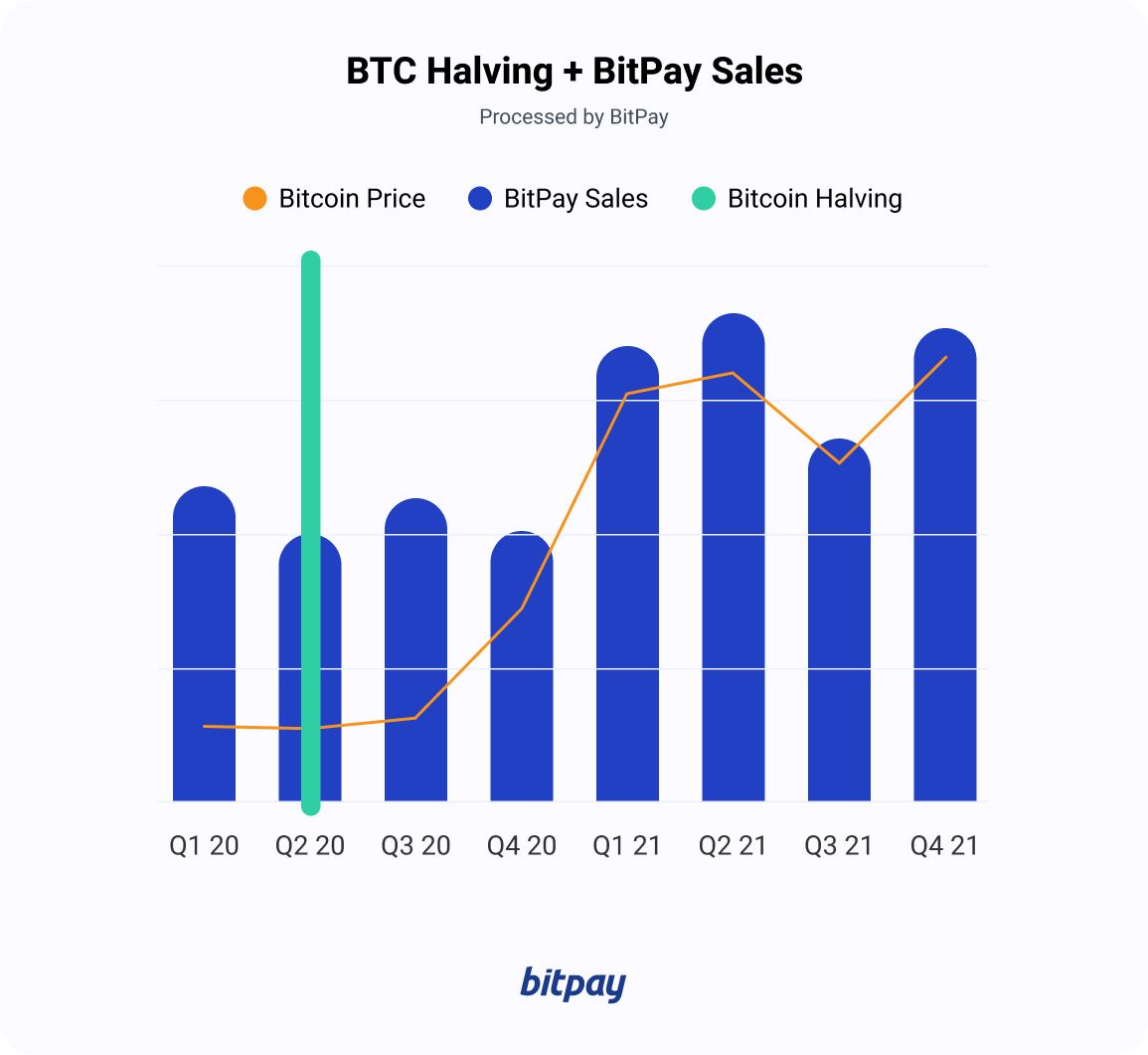
We can see that the BitPay sales draws a strong correlation to price increases spurred by the halving cycle.
It seems reasonable to anticipate that a similar trend will occur during the upcoming Bitcoin halving in 2024, which is less than a year away.
To best position your business to connect with Bitcoin customers and benefit from the run of spending, it’s urgent for organizations to take action while there’s still time.
BTC Halving and Spending Habits: What the Data Says
In the year following the last BTC halving event, internal BitPay data showed a 52% increase in payments processed.
However, certain industries, especially Luxury Goods, Automotive, Nonprofit, Precious Metals, Retail, and Consumer electronics, outperformed this baseline figure to a significant degree.
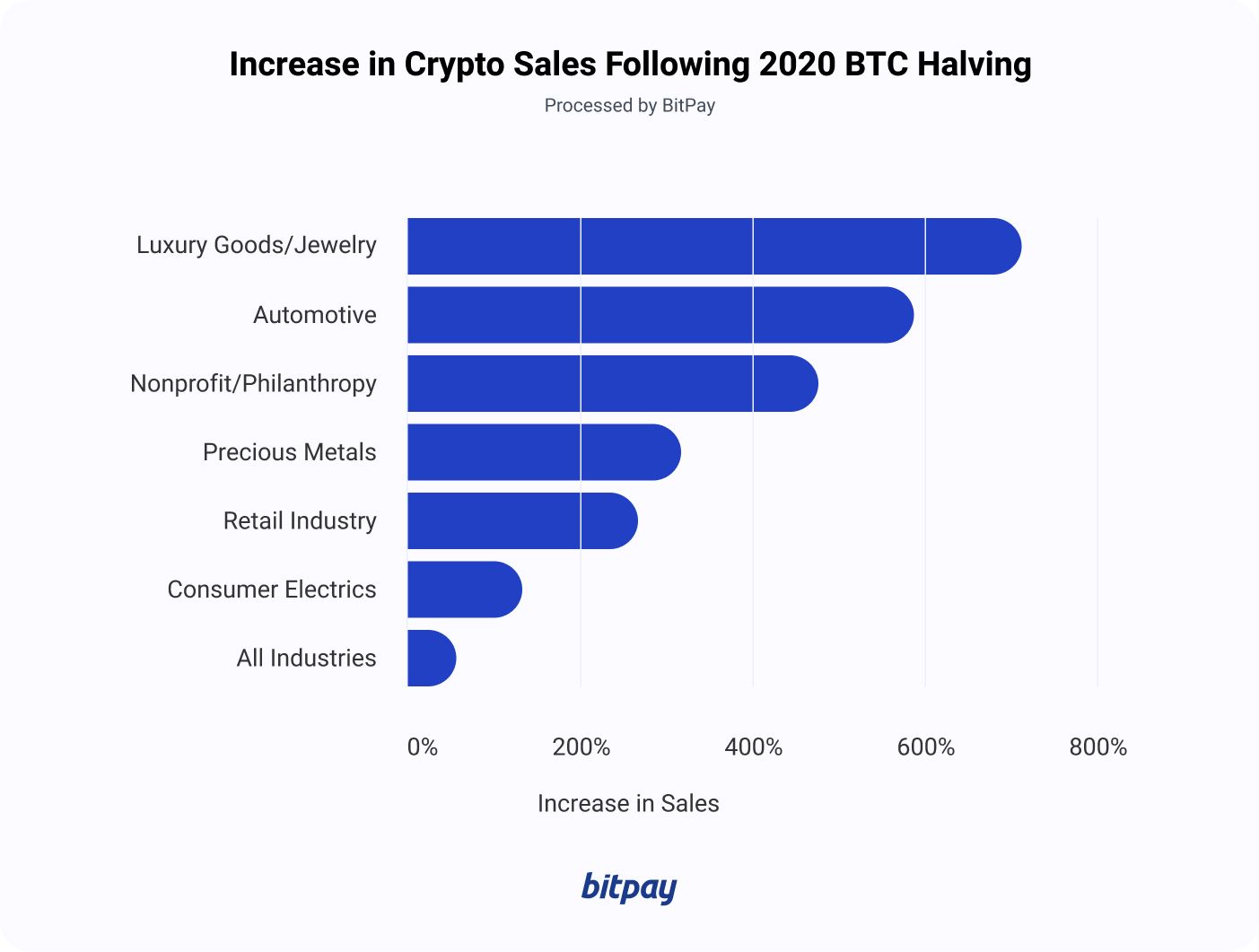
Luxury Goods have historically been popular with crypto consumers, from watches, jewelry, fashion and everything in between. Following the last halving, Luxury Goods crypto transactions grew 700%.
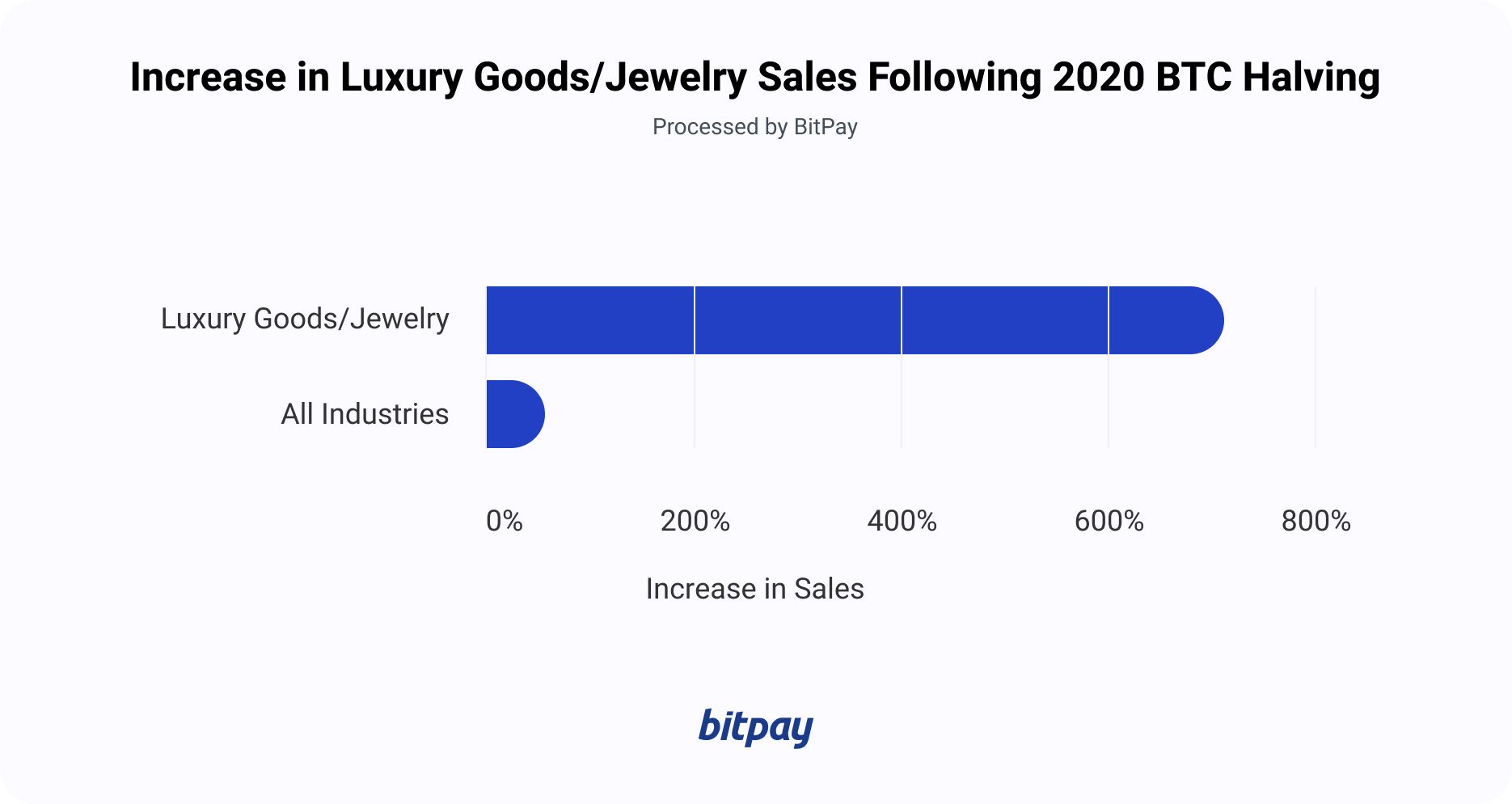
Automotive industry crypto transactions shot up almost 600% following the last halving event. In the spirit of cryptocurrency fundamentals, crypto consumers are keen on rejecting traditional banking methods when making large ticket purchases like vehicles, making the two a perfect fit.

Nonprofit and Philanthropic organization transactions grew 467% YoY following the last halving. Crypto investors are known to donate more and more often than traditional donors.

Precious Metals retailers enjoyed a big year following the last halving, with over 300% in crypto transactions. Some crypto consumers prefer to diversify their assets and build a sizable collection of precious metals.
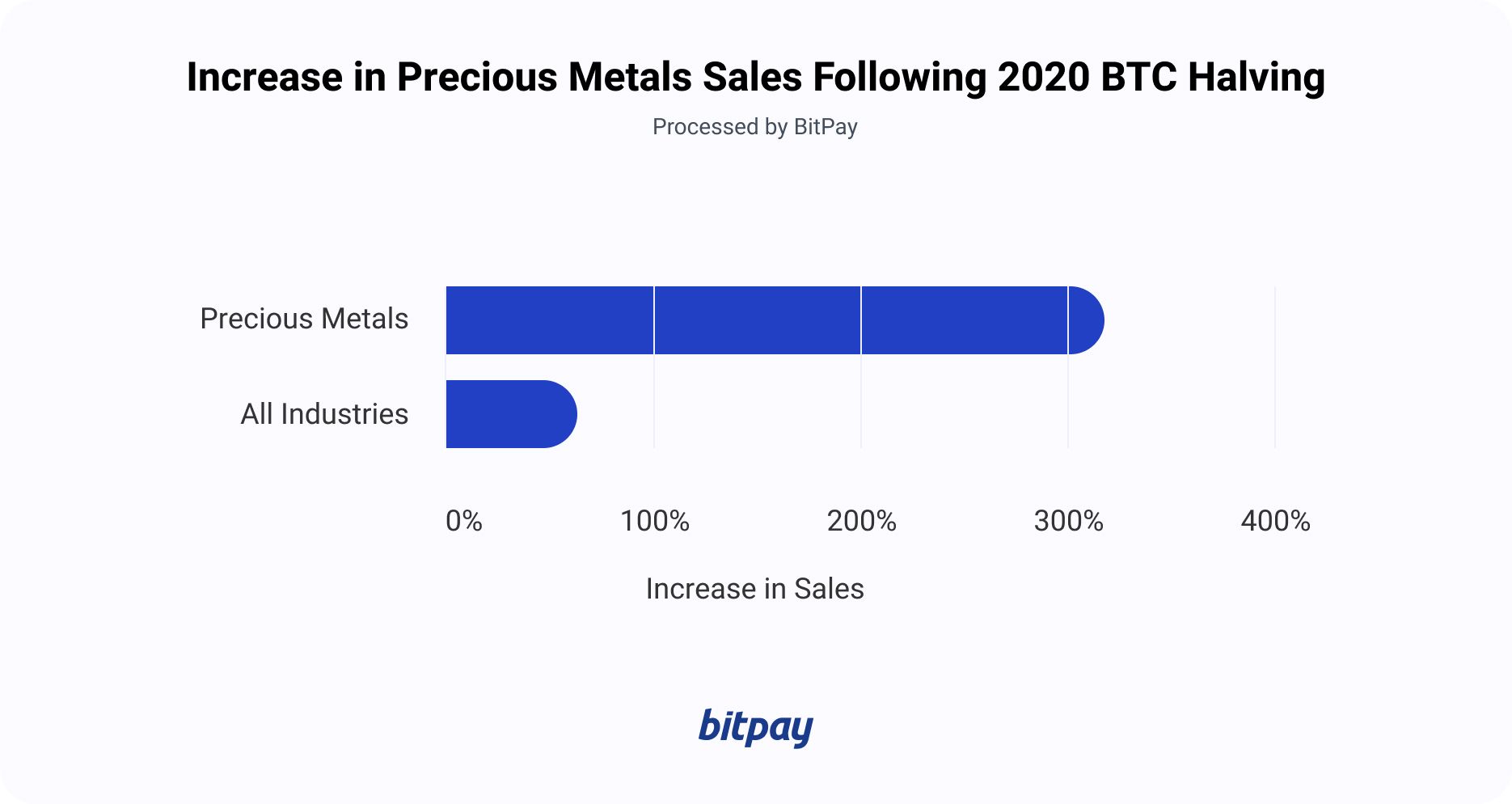
Retailers across a variety of niches embraced crypto transactions and benefited from this choice, seeing a rise of 243% in crypto transactions following the halving. Easy integrations with ecommerce checkout systems make crypto payments a lightweight but powerful addition to any retailer’s technology stack.

Consumer Electronics is a natural fit for the crypto consumer. Crypto customers made 121% more transactions on consumer electronic products and services following the halving event.
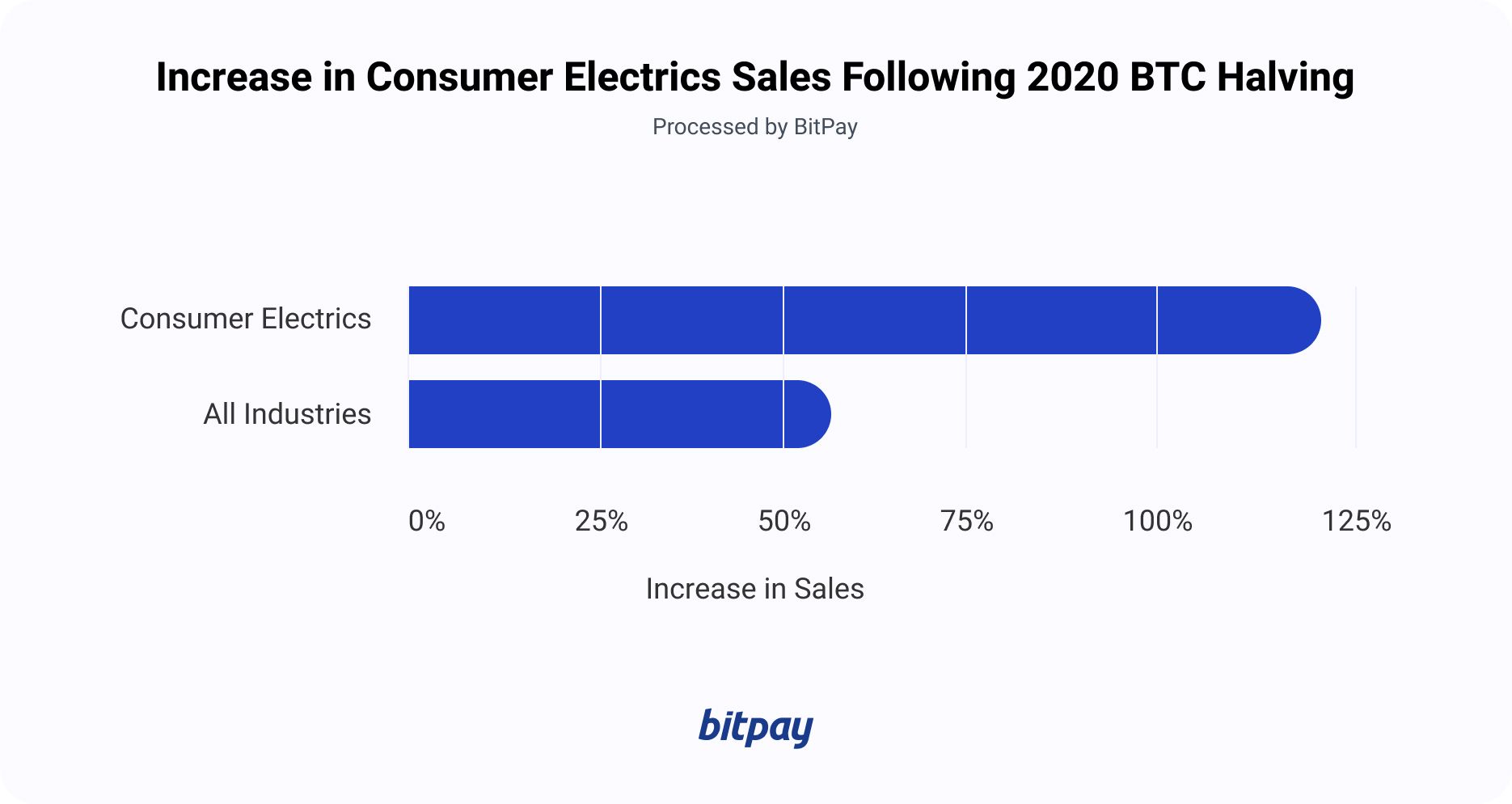
The takeaway for merchants is this: having the necessary infrastructure in place before the halving could increase sales by a significant degree. This one simple addition to a business’s operations – accepting crypto payments – can mean the difference between falling behind competitors or exceeding their performance.
How to Prepare for the Next BTC Halving Event as a Merchant
Waiting to take action until after the halving cycle could be a costly mistake.
As the data above show, the biggest sales increases occurred near the peak of the bull market and thereafter. If a business hadn’t implemented adequate crypto payment processing solutions well in advance of that time, customers may not have thought to spend their crypto on the relevant products or services.
This begs the question: what steps can merchants take to prepare for the upcoming Bitcoin halving event in 2024?
Assuming you’ve decided to take advantage of the tremendous opportunity afforded by accepting crypto payments, here are a few things that can be done to get started:
- Select a trustworthy payment processor.
- Integrate crypto payments into your business operations. This could be done on your website, email billing or at a physical point-of-sale device.
- Make plans to inform customers about their payment options and incorporate this as an aspect of future marketing efforts.
Additional steps that businesses can take involve spreading the word about crypto payments, interacting with the Bitcoin and crypto community, and building trust with related partners.
BitPay has direct relationships with many specific coin communities and foundations, and we’re involved in actively helping brands and retailers with co-marketing opportunities.
BitPay: Crypto Payment Processing Made Easy
As the most trusted names in crypto payment processing, BitPay provides crypto payment solutions that can be established in a matter of hours.
With BitPay, merchants never have to touch crypto. Customers can make online payments with crypto via the Pay with BitPay option at checkout Merchants are settled automatically with direct deposit every business day in their preferred fiat currency.
Interested in using BitPay for your business? Contact us today to learn more about our crypto payment services.
